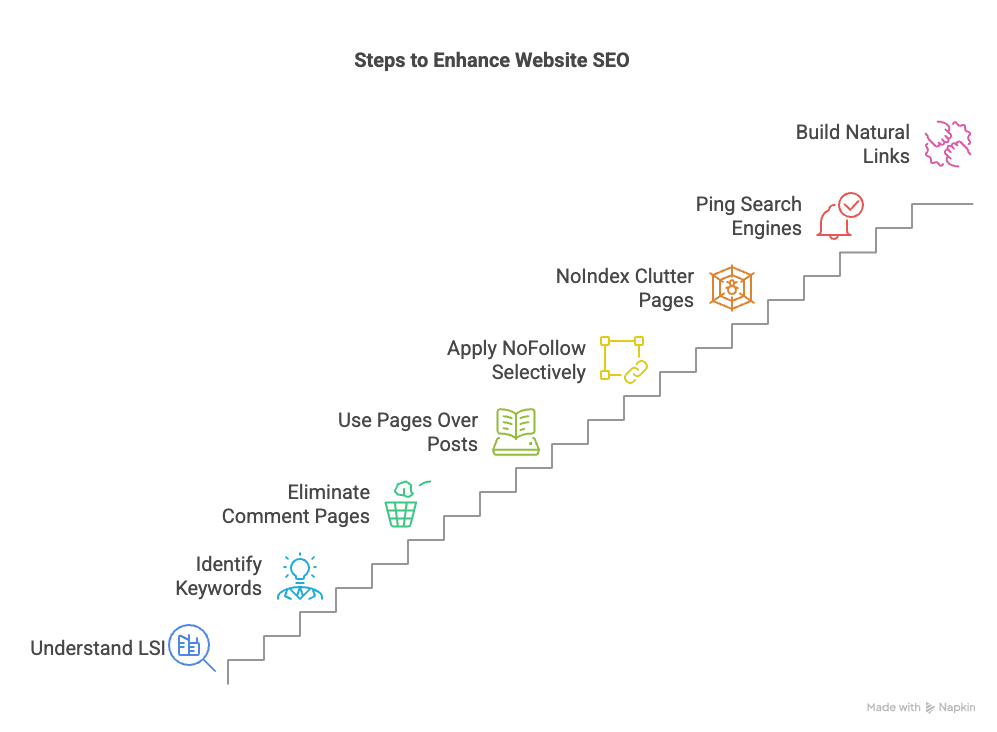WordPress exploded onto the scene in 2003 and quickly established itself as one of the best content management systems in the world. It’s easy to see why. It offers one of the most user-friendly interfaces around and equips users with excellent features and functionality, both free and paid.. Because of this immense popularity, there exists a staggering amount of plugins with which writers can optimize their blogs.
I (and many others) love that the platform builds in much of the SEO into the blog design. Even an SEO newbie can properly optimize their blog posts using a tool such as All-In-One SEO.
However, proper optimization isn’t easy. You must take the necessary steps to write SEO-friendly posts to fully use the platform’s potential.
We’ll discuss today how you can ensure your blog is properly optimized without relying solely on SEO tools. Skip the beginner’s stuff. Avoid post quality, timing, permalinks, tags, keyphrases, and pingbacks. Instead, we’ll focus on advanced tips and tricks. These are the things your SEO tools aren’t likely to do for you; they’re all tactics you’re going to have to implement yourself.
Your blog will be better for it.

Make Sure You Understand LSI – And How To Harness It
People often refer to LSI – or Latent Semantic Indexing – as a distant relative of SEO; This method uses algorithms. It sorts and groups documents. LSI has more structure than SEO. Search engines, like Google, use it often. In this context, it aims to reduce keyword-stuffing by seeking out content written organically and reading naturally.
To harness LSI, you’ll need to first know what your primary keywords are using Google Analytics. From there, it’s a simple matter of seeking out synonyms and synonymous phrases.
Get Rid Of Comment Pages
You really don’t need to use paginated comments unless you have a huge number of readers (in which case, you’ve probably already optimized your site properly). It’s honestly just needless clutter, and it’s got the potential to screw up your site’s SEO even further.
Use Pages Instead Of Posts
For more important content that you want to see ranked, it’s recommended that you use pages instead of posts. The reason for this is simple: users can’t comment on pages, meaning they can’t mess up keyword density. You thus have more control over what appears there, along with the ability to link that page from your main page, giving it more ‘juice’ and traffic.
Use NoFollow Selectively
As you well know, structuring your website properly is one of the more important steps to seeing it ranked. You’re going to want to tweak your site so that the ‘link juice’ flowing into it goes where you want it to go. It’s a technique known as NoFollow sculpting – certain pages (such as your “about” page) simply don’t need to be as powerful as others.
NoIndex Archive, Category, Pagination or Tag Pages
The problem with all the pages mentioned above is that they’re honestly just extra clutter for search engines to crawl their way through. Setting all but one of them to NoIndex will allow search engines to more easily find their way to your site’s content.
Ping Search Engines When You Update
Exposure is something you’re going to want to shoot for. With that in mind, whenever you add new content to your site, be sure to ping search engines in order to let them know. There are plenty of automated services designed to do this for you; you can set them up in Settings->Writing->Update Services.
Build Links Naturally; Shoot For High Quality Traffic
Lastly, build links to your site naturally, through awesome guest posts, top-notch content, and collaboration with big names in your particular niche. Doing all of this will ultimately allow you to bring more high-quality traffic to your site, increasing any potential conversions in the process.




